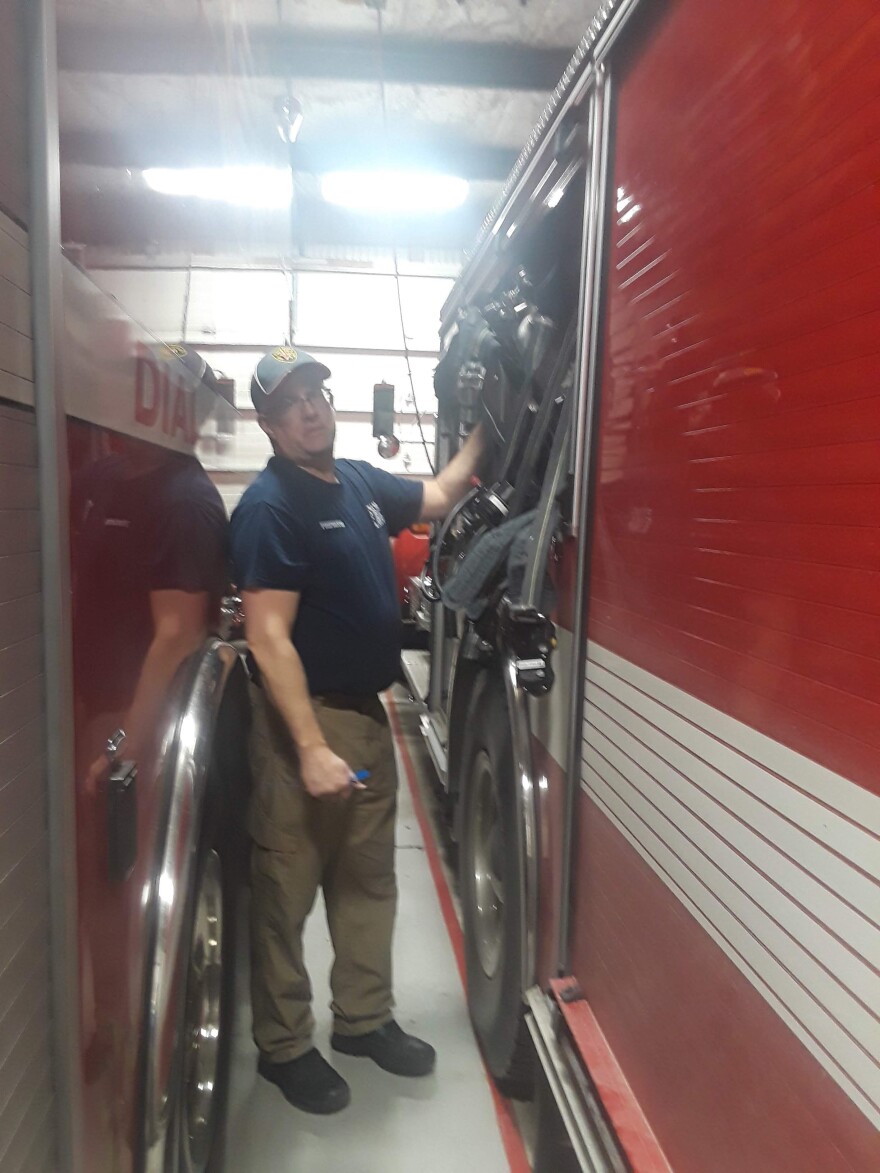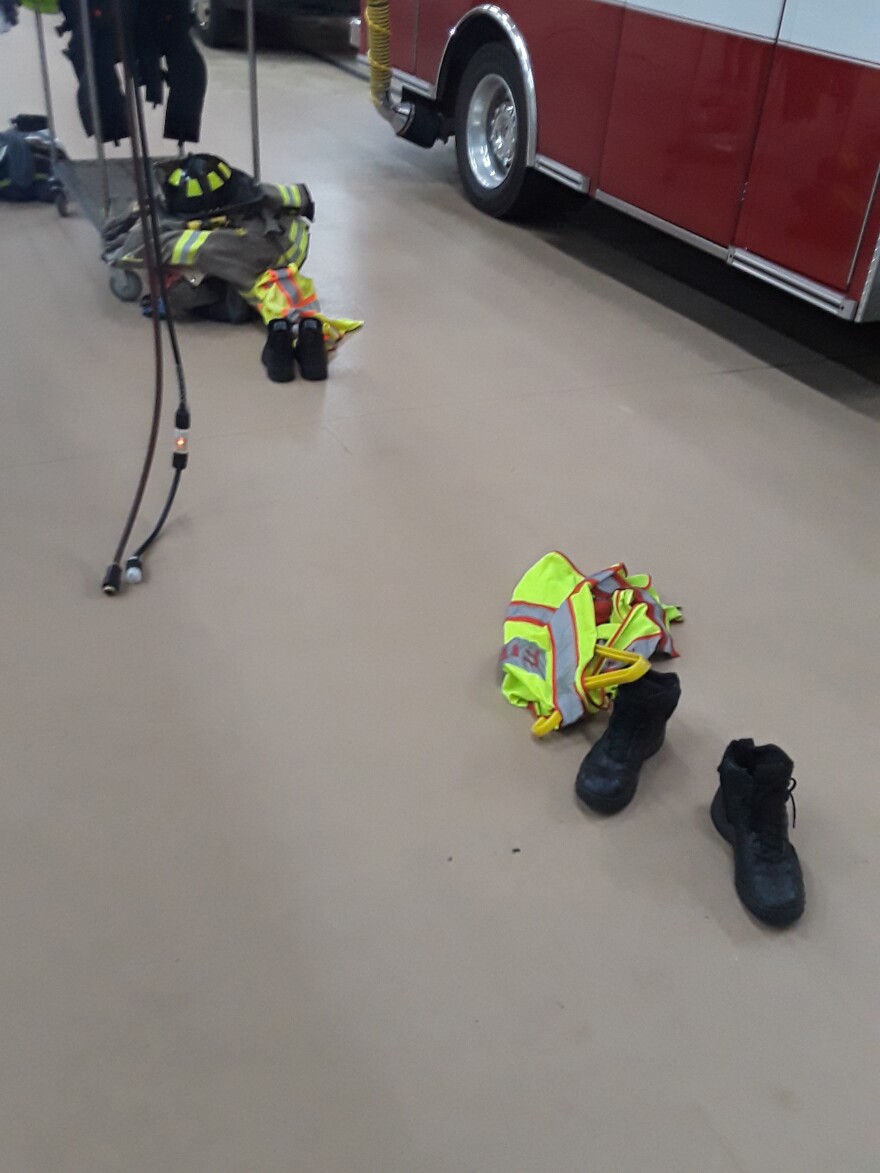Twenty years ago this Saturday, 351 firefighters died in their efforts to save people after the 9/11 attacks.
On that day, almost 3000 people were killed when al-Qaeda militants hijacked four airplanes in suicide missions against targets in the United States—including the World Trade Center in New York City and the Pentagon just outside Washington D.C.
The fallen first responders are being honored at the Wisconsin State Firefighters Memorial in Wisconsin Rapids.
Wisconsin Firefighters Ronald Naab and John Sponholtz gathered hundreds of pairs of shoes, each pair to represent each of the firefighters who died. The shoes will be on display as part of a 9/11 program.

Sponholtz is with the Tisch Mills Fire Department and is also an advanced EMT and registered nurse. He recalled September 11, 2001. He was in a bunker under the Manitowoc County Sheriff’s Department that day. His hazmat team was scheduled for a debriefing about two nuclear power plants bordering the district.
He said the first plane hit when he was leaving home, and he was on his way when the second plane hit. “I was actually down in the bunker when the [World Trade Center twin] towers fell,” he said.

Naab is a firefighter with the Allenton Fire Department and president of the Gearup Foundation that collects excess equipment from fire departments and rescue squads for Latin American first responders. He remembered hearing about a plane crashing as he was loading his truck working in sales. He saw footage of the second plane crashing on television at his house.
“As I went through the day, calling customers, it was eerie how quiet it was in the repair shops. I think everybody was just I think, somewhat in wonder of what's next. Where are we going?” he recalled.
Sponholtz said life changed for everyone that day. He wasn’t in New York City, but as a first responder, his hazmat team started going out on calls, especially once letters laced with anthrax began appearing in U.S. mail a few months later.
“So I ended up doing a lot of teaching and a lot of involvement after the fact because I was already up to speed at that time,” said Sponholtz. First responders took more bomb classes, radioactive classes, counterterrorism programming.
“You learn how to deal with things on a small scale or a large scale because you don't know where it's going to hit,” he recounted. Sponholtz said he knew a lot of firefighters from New York, and while he didn’t lose close friends, he lost friends.
“And you know, one of my heroes was [retired FDNY Captain] John Vigiano of New York. And you know, just an incredible, incredible man, he lost two sons, one police officer, one a firefighter. And to this day, your heart still hurts. Knowing that at any time, we could go to something not thinking of that there's somebody out to cause us harm. And that was something new in our heads on every call.”
Sponholtz articulated what makes first responders special, like those who lost their lives in the 9/11 attacks.“When everyone else is running from the buildings, we're going in. When everyone else was coming down the stairs, the firemen were going up,” he said. “It's what we do. It just is; we can't explain it. Don't ask us to explain it. And we would do it again, not much differently given the same circumstances.”
The two are spearheading an effort to collect 351 pairs of shoes to place in front of the Wisconsin State Firefighters Memorial in Wisconsin Rapids on Saturday, the 20th anniversary of the attacks.
Sponholtz said he was inspired by a podcast called Getting Salty hosted by two firefighters. The hosts talked about Squad 288 in Queens, New York that lost 19 firefighters, more firefighters than any other firehouse in New York City that day.
On the podcast, the firefighters mentioned that the most challenging thing the firehouse had to do at the time was account for who was alive and who wasn't.

“And they've looked at the shoes on the floor,” said Sponholtz. “You know, every firefighter steps from his shoes and dons his bunker gear, you know, the boots built into the pants. And we every one of us leaves our shoes behind. And sometimes, they don't get picked up. That was one of the methods that was used to identify the missing firefighters.”
The two decided to collect 351 pairs of shoes and spread the word at the Wisconsin Fire Chiefs’ convention. There’s a program for Saturday, September 11, 2021, at noon, and there will be about a 45-minute program to go along. So far, they’ve collected 500 pairs of shoes from six stations of the Waukesha Fire Departments and dozens more from companies like shoe stores and car dealerships.
They'll donate the shoes to four homeless veterans centers in Tomah, Union Grove, Green Bay, and Milwaukee, and a couple of additional treatment centers.
“Our goal is that they're all going to be put out to people that are in need,” said Naab. “And our primary goal is to vets.”





